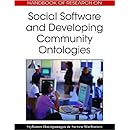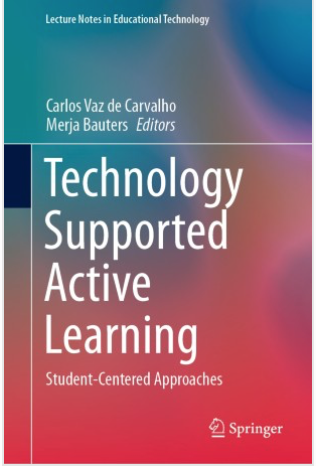Yesterday i had an interesting workshop “From Digital Environments to Hybrid Narrative Ecosystems” in Milano IULM with the participation of Nello Barillo, Andrea Miconi, Alberto Abruzzese and Anatole Pierre Fuksas.
Archive for December, 2009

Einstein: hybrid space, waves, and us being the hybridized tools in ecosystem
December 9, 2009Wonderful words from Einstein show that the idea of hybrid ecosystem in our web culture is actually more deeply explainable with physics.
Einstein wrote: The solution is simple, to work from real waves in a continuously connected space.
The Wave Structure of Matter – explaining matter’s necessarily interconnected motion in space – solves numerous problems of knowledge found in postmodern Metaphysics, Physics and Philosophy.
We are really structures of the universe, and our discrete and separate ‘body’ is a naive real illusion of the senses.
Physical objects are not in space, but these objects are spatially extended. In this way the concept ’empty space’ loses its meaning. … The particle can only appear as a limited region in space in which the field strength or the energy density are particularly high. …
A human being is part of the whole called by us universe, a part limited in time and space. We experience ourselves, our thoughts and feelings as something separate from the rest. A kind of optical delusion of consciousness. This delusion is a kind of prison for us, restricting us to our personal desires and to affection for a few persons nearest to us. Our task must be to free ourselves from the prison by widening our circle of compassion to embrace all living creatures and the whole of nature in its beauty… The true value of a human being is determined primarily by the measure and the sense in which they have obtained liberation from the self. … We shall require a substantially new manner of thinking if humanity is to survive. (Albert Einstein, 1954)
Some interesting:
http://www.quantummatter.com/_Media/EinsteinsLastQuestion.pdf
MATTER is made of spherical STANDING WAVES. The INWARD WAVE and OUTWARD WAVE TOGETHER will make up a STANDING WAVE.
So..if we as persons want to be this standing wave, there must be these two waves from “us” and to “us”, and we exist as hybrid standing wave that is stabile. We can be one particle, one person, and this way people in the communities with the external environment that we always use and modify, and where we always must try to be accommodated into, can form one hybrid ecosystem?

Crossing network borders: seeing people behind artifacts, taking action in people networks for collaborating on meanings
December 2, 2009Tonight i started to think of the nature of networks, but particularly of the transformations that take place while we go from one type of network to another type. I think from the ecosystem point of view, mapping the reasons of this transformation and how much it is really happening is interesting.
The fact is that even though people monitor each others’ content in the networks, it takes them to cross a certain barrier to start commenting, making contact with the authors, becoming really involved in the networks with people, not with artifacts only. It happens quite rarely between strangers, as much is my experience in networks.
Question is why does /scientific/ matchmaking (with papers and artifacts) in networks end so rarely with actual dating (synthesizing something great with real people, becoming to know and work with them)?
I have read and commented one paper about sharing cultures in Delicious, and it was not as big as we think, only maybe 20 % of people do this social browsing from one artifact to another, or moving from one person’s artifacts to find other artifacts.
Riina Vuorikari wrote:
…the unauthenticated users tend to explore resources through browsing (51%): 30% browse by discipline and 22% Community browsing, whereas the authenticated users browse less (38%), but additionally use Personal search (9%).
Another study, Olga, one of my master student promoted one event in Facebook and in other social networks, and just after the event she sent around a questionnaire to know how people responded and contributed. The ratio is about same 20 % who comment, forward or want to collaborate some extent.
Why is it so low? What hinders it, or is it natural that in ecosystems only 20 % of “energy” moves from one systemic level to another…tries to form a second level “networking-organ” formation.
Hoffmayer’s papers of semiotic fitness and niches seem to talk of the same things, how we translate from genotype to environment? Here environment is all these artifacts in the web.
Survival through semiosis implies a dynamic creativity. In addition to vertical semiotic system, i.e. genetic communication down through the generations, all organisms also partake in a horizontal semiotic system, i.e. communication throughout the ecological space (Hoffmeyer and Emmeche 1991).
The semiotic fitness, should ideally measure the semiotic competence or success of natural systems in managing the genotype-envirotype translation processes. The optimization of semiotic fitness results in the continuing growth in the depth of interpretative patterns accessible to life (Hoffmeyer, 1998).
The transformation of molecules to signs opens for an unending semiogenic evolution based on semetic interaction patterns between entities at all levels (Hoffmeyer, 2005).
I started to think, maybe it would be an excellent topic for meta-study from different papers from social networks to find out what might be the reasons when we cross this artifact-network border and become involved and interested in people.
Probably this border also exists the other way, moving from people-centred social networks to seeing and collaborating on the artifact content level.
PS. Fernando Santamaria pointed to the Engeström’s paper of object centered sociality.
Jyri Engeström (2005) wrote: we can use the object-centered sociality theory to identify new objects that are potentially suitable for social networking services.
MOVING ACROSS
From people to content:
a) leaving traces of action in networks (artifacts, tags, web of connections in network, certain types of action in network)
b) monitoring others in networks (passive mode, no action follows) (social surveillance)
c) using the cues from other for making individual decisions (active mode)
– can happen by monitoring individuals and using these cues from networks to take action (social navigation)
– monitoring the system patterns by pulling out datasets, visualizations etc.
(semantic navigation, social information retrieval)
d) monitoring others and resulting in collaborative action that is not coordinated centrally (participatory surveillance, swarming)
From content to people: What trends are there???
See this figure in the paper:
Click to access vuorikari_koper_socialsearch.pdf
I think it may be great to develop more universal figure for social software ecosystems about similar functioning across various network borders from people to artifacts.
So, what are these factors that make us shift our interest and activity back and forth between the network of people and networks of artifacts?
Are these networks mixed in our head or are they hybrid?
Something to study further…
Here is a related paper, that enables to study this issue:
Artefact-Actor-Networks as tie between social networks and artefact networks
Wolfgang Reinhardt
Matthias Moi
Tobias Varlemann
In this paper we introduce the approach of Artefact-Actor-Networks that tries to connect social networks and artefact networks in order to make claims on the semantical connections between persons and manifold artefacts.
The resulting Artefact-Actor-Networks allow making claims about the ties between artefacts from multiple sources and the actors involved in their creation, modification and linkage.
To connect artefacts and actors under and between each other, semantic relations are required. Every relation in the network connects objects by a semantic context like isAutor or isRightHolder. With the help of Artefact-Actor-Networks participation in the lifecycle of artefacts as well as significant connections to involved actors will be outlined.
We consider the communication and collaboration with each tool (e.g. chat, e-mail anddocuments) as a single layer of the respective network. We unite these single layers in both social and artefact networks to consolidated networks that contain all actors and artefacts respectively.
In the context of Artefact-Actor-Networks there exist semantic relations between actors and artefacts (AArelation), actors and actors(ACT2 relation) and between artefacts and artefacts (ART2 relation).
http://artefact-actor-networks.net/2009/09/what-are-artefact-actor-networks/








